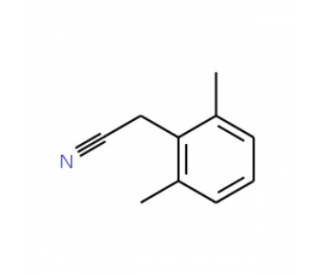詳細(xì)說明
Purity
>95%, by SDS-PAGE under reducing conditions and visualized by Colloidal Coomassie? Blue stain.
Activity
Recombinant Human Ubiquitin N-Terminal Fluorescein is ideal for use in assays requiring fluorescent detection. Optimal fluorescence at pH 8.0 is monitored with an excitation wavelength of 490 nM and an emission wavelength of 515 nM. Reaction conditions will need to be optimized for each specific application. We recommend an initial Recombinant Human Ubiquitin N-Terminal Fluorescein concentration of 0.1-1 μM.
Source
E. coli-derived Contains a single N?terminal fluorescein
Accession #
Predicted Molecular Mass
8.6 kDa
U-580 |
| |
Formulation Lyophilized from a solution in deionized water. | ||
Reconstitution Reconstitute in aqueous buffer or DMSO to 1 mg/ml | ||
Shipping The product is shipped at ambient temperature. Upon receipt, store it immediately at the temperature recommended below. | ||
Stability & Storage: Protect from light. Use a manual defrost freezer and avoid repeated freeze-thaw cycles.
|
Background: Ubiquitin
Ubiquitin is a 76 amino acid (aa) protein that is ubiquitously expressed in all eukaryotic organisms. Ubiquitin is highly conserved with 96% aa sequence identity shared between human and yeast Ubiquitin, and 100% aa sequence identity shared between human and mouse Ubiquitin (1). In mammals, four Ubiquitin genes encode for two Ubiquitin-ribosomal fusion proteins and two poly-Ubiquitin proteins. Cleavage of the Ubiquitin precursors by deubiquitinating enzymes gives rise to identical Ubiquitin monomers each with a predicted molecular weight of 8.6 kDa. Conjugation of Ubiquitin to target proteins involves the formation of an isopeptide bond between the C-terminal glycine residue of Ubiquitin and a lysine residue in the target protein. This process of conjugation, referred to as ubiquitination or ubiquitylation, is a multi-step process that requires three enzymes: a Ubiquitin-activating (E1) enzyme, a Ubiquitin-conjugating (E2) enzyme, and a Ubiquitin ligase (E3). Ubiquitination is classically recognized as a mechanism to target proteins for degradation and as a result, Ubiquitin was originally named ATP-dependent Proteolysis Factor 1 (APF-1) (2,3). In addition to protein degradation, ubiquitination has been shown to mediate a variety of biological processes such as signal transduction, endocytosis, and post-endocytic sorting (4-7).
Produced via a proprietary process resulting in a single Fluorescein modification exclusively on the N-terminus of Ubiquitin. This site-specific modification results in a Ubiquitin that is fully functional at the C-terminus, and with the full compliment of reactive lysines to allow for poly-Ubiquitin chain incorporation. This reagent allows for poly-Ubiquitin chain incorporation of Fluorescein-N-terminal Ubiquitin with higher efficiency and detection sensitivity than traditionally modified Ubiquitins.
References:
Sharp, P.M. & W.-H. Li. (1987) Trends Ecol. Evol. 2:328.
Ciechanover, A. et al. (1980 ) Proc. Natl. Acad. Sci. USA 77:1365.
Hershko, A. et al. (1980) Proc. Natl. Acad. Sci. USA 77:1783.
Greene, W. et al. (2012) PLoS Pathog. 8:e1002703.
Tong, X. et al. (2012) J. Biol. Chem. 287:25280.
Wei, W. et al. (2004) Nature 428:194.
Wertz, I.E. et al. (2004) Nature 430:694.
Corsi D., et al. (1995) J. Biol. Chem. 270:8928-8935.
Mitsui A., et al. (1999) PNAS 96:6054-6059.
Mimnaugh E.G. et al. (1999) Electrophoresis 29:418-428.
Wilkinson K.D. and Audhya T.K. (1981) J. Biol. Chem. 256:9235-9241.
Entrez Gene IDs:
7314 (Human); 298693 (Rat)
Alternate Names:
RPS27A; UBA52; UBB ubiquitin B; UBB; UBC; Ubiquitin











 粵公網(wǎng)安備44196802000105號(hào)
粵公網(wǎng)安備44196802000105號(hào)